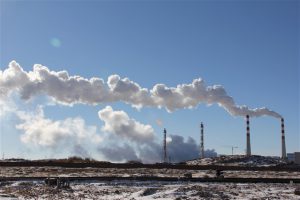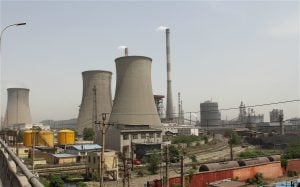On the final day of 2015, China’s central government said it would suspend the approval of new mines, with the ban starting in 2016, cutting coal’s share of national energy consumption to 62.6% in 2017, down from 64.4% currently.
We asked experts on China’s energy and climate polices the following question: How will this ban help China meet its CO2 and renewable energy targets, and reduce other types of pollution from the mining, transportation and use of coal?
Alvin Lin, China climate and energy policy director, Natural Resources Defense Council
The government’s ban on approving new coal mines is a reflection of energy policy catching up with the reality that China’s coal use is on an accelerating downward trend, as its economy shifts decisively away from heavy industry, wind, solar, natural gas and nuclear replace coal-fired power. The government is targeting at least 20 gigawatts (GW) of wind and 15 GW of solar projects next year, and is determined to improve grid integration and dispatch of renewables. Expanding coal mines now is a poor investment, and makes no sense given China’s expansion of renewable power and slowing growth for demand in electricity.
Even the king of coal, Shanxi province, has in the past few years recognised that coal is not the future, and is seeking to transform itself into a leader in solar energy with the opening of a new national solar PV demonstration base in Datong last June, constructed on top of coal mine subsidence land. The base will install 3 GW of solar PV projects in the next three years, generating clean electricity to be sent east to Beijing.
The ban on new coal mines is a start to re-balancing China’s energy structure, but of course, China is still producing and consuming over 3.6 billion tonnes of coal per year, and state-owned enterprises (SOEs) are continuing with plans to build already-approved coal mining and coal power bases and coal chemical plants, including in Xinjiang, Inner Mongolia and Shanxi. The next step will be for government and industry to re-evaluate the wisdom of these projects, given that China will need to control coal consumption even more strictly in the next five years if it is to solve its air pollution problem and re-balance its economy to a greener path.
Deng Shun, analyst, ICIS Energy
Expansive development has led to China suffering quite severe air, water and soil pollution. The central authorities are aware of this and, as marked by the September 2013 action plan on air pollution, have decided to make major cuts in coal consumption so as to alleviate worsening environmental issues. Later the National Energy Administration and other government bodies followed suit with their own measures to cut coal use and push forward with cleaner sources of energy, such as natural gas, hydropower and nuclear. This ban on new coal mines is due to the oversupply of coal – the aim is to prevent new mines opening and close existing inefficient mines in order to re-balance supply and demand. We believe these measures will help reduce China’s coal consumption and CO2 emissions.
Dabo Guan, University of East Anglia
China’s coal consumption increased at an annual rate of 8.8% over the 2000–2013 period, and reached a consumption peak in 2013 of 422 million tonnes. In 2014, Chinese coal consumption actually decreased 2.9%, and is expected to further decrease another 4%-5% in 2015. China’s coal stock has been keep at a very high level of 300 million tonnes or above for over four years. Due to weak consumption, China doesn’t need new coal mines. Furthermore, China is contemplating a coal cap at 420 million tonnes right now. Chinese economic growth will be mostly powered by the newly added capacity from natural gas and renewables in the future.
Hu Tao, director, China Programme, WWF
This ban on new coal mines is mainly for economic reasons rather than climate change concerns. China is facing an over-supply of coal. Prices have fallen sharply since the start of the decade. It’s because of slowing demand for coal; and fast growing capacity of coal mining. However, China’s poor air quality is likely to be part of the reason for the ban, as the government aims to sharply reduce sulphur dioxide, nitrous oxide and other pollutants to improve ambient air quality.
The ban will have positive impacts for the environment, decreasing the use of coal and increase the share of renewables in the energy mix; and reduce carbon emissions, which would fulfil two of China’s commitments targets outlined in its Intended Nationally-Determined Contribution to UN climate talks. The ban is unlikely to be hugely relevant to coal-to-gas plants, which had they been built, would have made a big increase in China’s emissions. But these aren’t economically feasible (because of low energy prices), nor environmentally-friendly (because of high CO2 output and water shortages). So I don’t think this ban will make much of a difference as these projects wouldn’t likely happen anyway.
Lauri Myllyvirta, energy campaigner at Greenpeace
The rapid in fall in demand for Chinese coal appears to have taken coal mining and coal power companies completely by surprise. China’s current coal mining capacity exceeds output and consumption by one billion tonnes – more than the total coal output of world’s number two coal producer, the US – and another billion tonnes of coal mining capacity are still reported to be under construction. This demonstrates the massive overhang of projects that China still has in industry as a result of the investment boom seen in the past ten years.
In light of this, the practical significance of ceasing coal mine approvals appears limited within the next years. Much more is needed to resolve the enormous overcapacity issue. The symbolic and political significance of the announcement, by contrast, is high.
As China prepares its all-important 13th five-year plan, the fact that the country’s top energy regulator seems to have accepted the reality that coal demand growth is not coming back, is very important. In particular, it seems hard to reconcile the ban on new approvals with the western large scale coal bases outlined in the 12th five-year plan. We highlighted these bases as the biggest threat to the global climate in our 2013 report “Point of No Return”.
Hao Tan, senior lecturer, University of Newcastle, Australia
The ban on new coal mines makes both economic and ecological sense. China’s coal industry continued to struggle financially in 2015, with over 80% of coal mining companies being in loss. Similarly, as in industries such as steel and cement, China’s coal industry suffers from major oversupply, especially in face of the rapid growth of energy production based on other sources such as wind, solar and nuclear. This ban, therefore, seems to be a part of the policy package to reduce the excessive capacity which is now the number one task in the country’s economic strategy for 2016.
Locally, to limit the use of coal, especially that for coal-fired heating, is urgently needed to tackle the severe smog problem. The new policy on coal reflects a latest effort by agencies of the central government, which take greater responsibilities for those challenges than local governments, and which seem convinced that certain administrative measures at the national level are necessary rather than leave those to local governments or to distorted ‘market forces’.
The policy is certainly a good step forward. However, the government should consider tougher measures on coal if its environmental and economic goals are to be achieved, such as to make a more radical cut to the existing coal producing capacity, and to accelerate its energy pricing reform to better reflect the environmental and social costs of coal.
Jianli Guo, head of economics research, China coal science research institute
Oversupply of coal production capacity is the main reason why the government has halted approval of new mining projects. The coal mining industry has about 1.5 billion tonnes of surplus. Currently, China is entering into a post-industrialisation era, all the conventional industries face an over-capacity problem.
So, how to reduce supply so that the overproduction gap is wiped out? The closure of old and small mines, and a removal of the practice where supply contracts are overfulfilled, would cut around 35% of this surplus production.
The destruction of existing coal mines will reduce the ecological impact due because output will be concentrated in fewer mines and production made more efficient.
Additional reporting by Yu Jie






